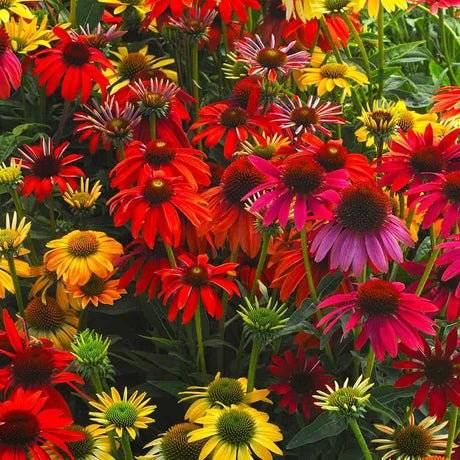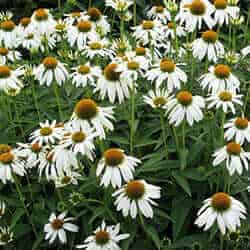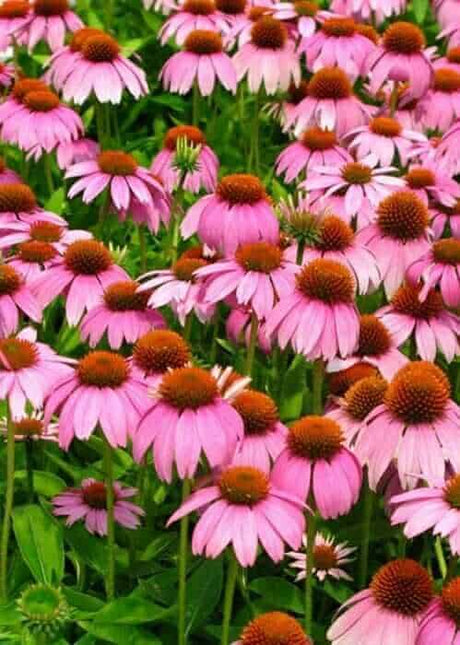'Indian Summer' Black-Eyed Susan Rudbeckia
'Indian Summer' Black-Eyed Susan Rudbeckia - 2.5 Quart is backordered and will ship as soon as it is back in stock.
Couldn't load pickup availability
Description
Description
The 'Indian Summer' Black-Eyed Susan Rudbeckia is a vibrant perennial plant known for its striking yellow petals and dark brown centers. This delightful variety features daisy-like flowers that can reach up to 4 inches in diameter, providing a stunning visual display in any garden. The lush green foliage creates an appealing backdrop for the bright blooms, while the plant typically grows between 2 to 3 feet tall, making it an excellent choice for borders or as a focal point in garden beds.
What sets the ‘Indian Summer’ variety apart from other Black-Eyed Susans is its unique color variation. While traditional Black-Eyed Susans sport a golden yellow hue, ‘Indian Summer’ showcases a rich, golden-orange tone that deepens as the flowers mature. This captivating color not only adds warmth to your landscape but also attracts pollinators such as bees and butterflies, enhancing the biodiversity of your garden.
The growth habits of Black-Eyed Susan ‘Indian Summer’ are characterized by its sturdy, upright stems that are resistant to wind and rain. This resilience makes it a low-maintenance choice for gardeners. The blooming period typically spans from mid-summer to early autumn, with flowers appearing in July and continuing to brighten your garden until October. To ensure optimal blooming, it is recommended to deadhead spent flowers regularly, encouraging the plant to produce more blooms throughout the season.
How to Care for 'Indian Summer' Black-Eyed Susan Rudbeckia
To ensure your Black-Eyed Susan ‘Indian Summer’ thrives, it’s essential to provide optimal growing conditions that cater to its specific needs.
How Much Sun Does Indian Summer Rudbeckia Need?
These vibrant perennials flourish best in full sunlight, ideally requiring at least 6 to 8 hours of direct sunlight each day. This exposure not only promotes healthy growth but also enhances the vivid colors of their stunning blossoms.
What Type of Soil Is Best for Black-Eyed Susan Like?
When it comes to soil, the Black-Eyed Susan ‘Indian Summer’ prefers well-drained, loamy soil. A pH level between 6.0 and 7.0 is ideal, as it allows for optimal nutrient absorption. If your garden soil is heavy clay or overly sandy, consider amending it with organic matter such as compost or well-rotted manure to improve drainage and nutrient content.
How Much Water Does Rudbeckia Need?
Watering is another crucial aspect of care. While these plants are drought-tolerant once established, they benefit from regular watering during their first growing season to establish robust root systems. Aim to keep the soil consistently moist but not soggy, as excessive moisture can lead to root rot. For best results, water at the base of the plant early in the morning to minimize evaporation and fungal diseases. Additionally, ensure that your planting site has good drainage to prevent waterlogging, which can harm the plants.
Should I deadhead black-eyed susan?
Deadheading is an important technique to encourage more blooms and maintain the plant's aesthetic appeal. Regularly remove spent flowers by pinching or cutting them off at the base of the stem. This not only keeps your garden looking tidy but also prevents the plant from going to seed too early. Additionally, pruning the stems back in late autumn after the first frost will help prepare the plant for a vigorous growth cycle in the following spring.
Care & Use
Care & Use
Spacing Recommendations
Spacing Recommendations
-
Scientific Name
-
Hardiness Zone3, 4, 5, 6, 7, 8, 9
-
Sun ExposureFull Sun to Part Shade
-
Evergreen or DeciduousDeciduous
-
FeaturesAttracts Birds / Butterflies, Deer Resistant, Drought Tolerant, Fast Growth, Flowering, Sun Loving
-
Feature ColorYellow
-
UsesAccent, Border, Cut Flowers, Mixed Garden Bed, Container
-
Water NeedsMedium
-
Bloom SeasonSummer, Fall
Growing Zones : 3, 4, 5, 6, 7, 8, and 9








